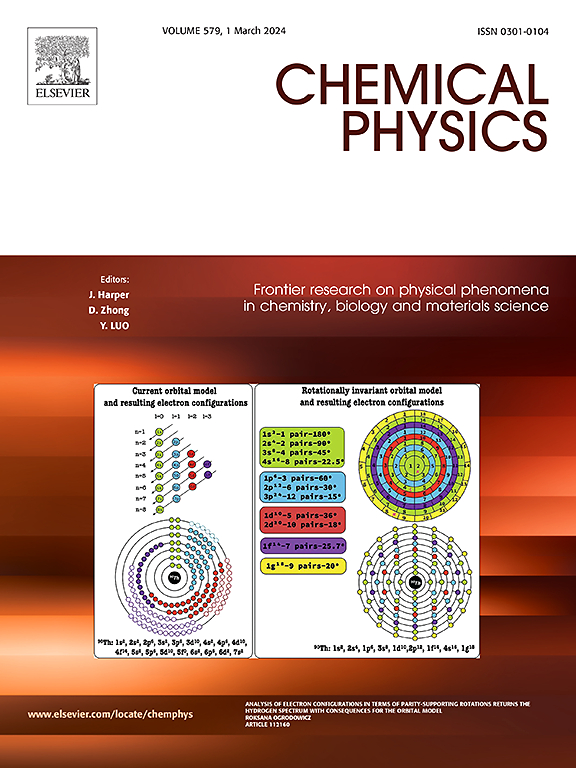Understanding the alkali fusion activation mechanism of quartz treated by sodium hydroxide at atomic level
IF 2
3区 化学
Q4 CHEMISTRY, PHYSICAL
引用次数: 0
Abstract
The alkali fusion of quartz by NaOH at atomic level was studied using reactive force field molecular dynamic (ReaxFF MD) simulations. It was found that NaOH activates quartz through two ways: one is that the OH- ions interact with the hydroxyl groups on quartz surface to form water molecules and ionic bonds, the other one is that the violently moving Na+ ions break the Si-O bonds both on the surface and inside of the quartz. Due to the confinement effect, Si atoms can only vibrate in a narrow region. However, the breakage of the Si-O bond results in an increase in the number of Q3, the appearance of Q2, Q1, Q0, and the disruption of the quartz network structure. The above findings provide a deep insight into the alkali fusion of quartz, and demonstrate that to active the quartz surface using low-alkali dosage is theoretically feasible.
求助全文
约1分钟内获得全文
求助全文
来源期刊

Chemical Physics
化学-物理:原子、分子和化学物理
CiteScore
4.60
自引率
4.30%
发文量
278
审稿时长
39 days
期刊介绍:
Chemical Physics publishes experimental and theoretical papers on all aspects of chemical physics. In this journal, experiments are related to theory, and in turn theoretical papers are related to present or future experiments. Subjects covered include: spectroscopy and molecular structure, interacting systems, relaxation phenomena, biological systems, materials, fundamental problems in molecular reactivity, molecular quantum theory and statistical mechanics. Computational chemistry studies of routine character are not appropriate for this journal.
 求助内容:
求助内容: 应助结果提醒方式:
应助结果提醒方式:


